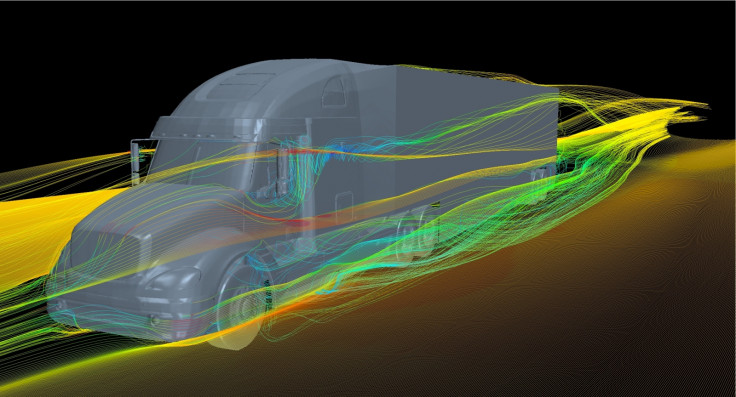Big Drop in Fuel Consumption Shown by Using Drag Reducing Devices on Trucks

Studies by researchers at Lawrence Livermore National Laboratory show that drag-reducing devices on big vehicles like trucks can help save billions of litres of gasoline wasted on the highways.
This in turn means savings in billions of pounds, as well as tonnes of carbon emissions avoided.
The drag experienced by the vehicle is a result of the airflow interacting with wheels and other structures under the body of the trailer.
By using trailer skirts, which are panels affixed along the lower side edges of a trailer, and a boat tail fairing, a device affixed to the back of the trailer that reduces the trailer wake size, the team could reduce the aerodynamic drag by as much as 25%, which translates to a 13% decrease in fuel consumption.
A 19% improvement in fuel economy which the drag experiments promise, translates to 25 billion litres (6.5 billion gallons) of diesel fuel saved per year and over 60 million fewer tonnes of carbon dioxide emission into the atmosphere.
For diesel fuel, the savings are about £17b, says the team.
Each year, in America alone more than 2 million tractor-trailer trucks that cruise the highways consume about 136 billion litres of diesel fuel, representing more than 10% of the nation's entire petroleum use.
Annual energy consumption in the global road transportation sector is projected to grow from 81.1 quadrillion Btu in 2014 to 101.7 quadrillion Btu in 2035.
About 13% of global carbon emissions arise from the transport sector with 95% coming from petroleum-based fuels.
Transportation is the fastest growing source of carbon emissions and accounted for about 2,300 megatons of CO2 in 2010.
While the US is projected to lower its transport emissions from 670 megatons annually to 560 megatons by 2050, China's emissions are predicted to go from 190 megatons annually to nearly 1,200 megatons and India's from about 70 megatons today to over 500 megatons.
Air pollution from increasing vehicular population is another major challenge.
© Copyright IBTimes 2025. All rights reserved.





















